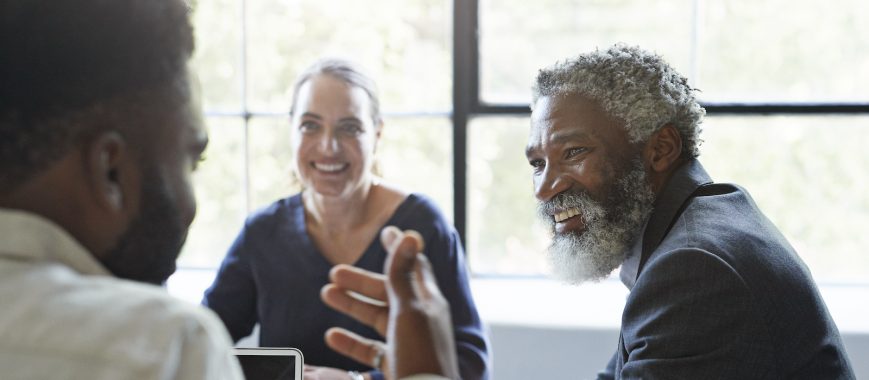Other parts of this series:
In June I spoke with Manulife’s Sushmita Munshi to film our first “Evolving Ecosystems” podcast. Munshi heads ManulifeMOVE, a behaviour-linked programme that integrates activity-tracking and insurance solutions to motivate healthy habits. This series of three blogs looks at the central importance of data, how Manulife has approached creating an ecosystem, and the technical aspects involved in delivering complex innovation in a large organisation.
The purpose of an ecosystem is to provide customers with a value-add that they cannot easily get elsewhere. That additional value is greater than the sum of the ecosystem’s individual parts, and stems in large part from the collaborative model at its heart.
For Manulife, finding the right partners for its health ecosystem starts by identifying what its customers need, then seeking out potential partners who can provide that. The next step is to ensure there is a cultural fit between Manulife and the potential partner; if there is, things move forward.
Over time, Munshi has noticed an evolution in Manulife’s view of partners. As a large financial services firm, it traditionally saw them as vendors; suppliers of services that the insurer engages. But over time, across the business, “that relationship has actually become very fluid”.
Some want to work with Manulife because doing so will open up new avenues. “But very often there are partners who are much larger than us, where we almost want to plug in to their ecosystem – and then the conversation and the power balance tilt,” she says. “When engaging partners, you’ve got to be conscious that you sometimes need to take off your traditional hat and go, ‘You know what, this is going to be a different kind of discussion and we just have to find our equation and fit.’”
Selecting partners
For its health ecosystem, Manulife looks for three areas in which partners can help. The first is distribution: which partners can help Manulife reach people who lie outside its existing typical distribution channels? These partners are already in the lives of those customers, and can help Manulife connect with them.
“The second one is around product and engagement. Are there partners who can enrich and complement our product or drive engagement?” she says. “At the end of the day, we are an insurance firm, and customers often don’t engage with insurers day in, day out. However, they do work out every day; they do take transportation every day; and they do get coffee and food every day.”
The third group is operational partners – players in areas where Manulife needs external assistance. “We would bring in partners to help us provide that service – be it in digital contact management or fraud management, or even just looking at aspects where we need support,” she says.
Having the right partners was important for ManulifeMOVE’s speed to market, and one reason it’s proven successful. But that’s only the start of a process of building a sustainable value proposition and continuously improving on it.
“That has been a journey of watching how we are doing, strategising how we are going to pivot, testing those pivots by launching them in the market and returning to watching the dial,” Munshi says. “It’s been continuous iteration of the proposition, of the tech solution and the operating model.”
Different markets, different needs
Manulife has a slightly different position across most of the six markets in which ManulifeMOVE is available – Cambodia, Mainland China, Hong Kong, the Philippines, Singapore, and Vietnam – and that’s because customer needs and the potential partners in each market tend to vary.
Understanding each market’s context is key, says Munshi. To that end, Manulife conducts research to learn customer needs; it determines its positioning in each market and its relative strengths that it could use to leverage a complementary play; and it assesses potential partners that can help it to provide the services its customers need in their health ecosystem.
Those needs often differ. Manulife recently provided a list of 10 options that customers could vote to have included on the app. In Vietnam, customers wanted information, features and functions that would help them better understand their health and what they could do to improve it.
“In Hong Kong, the answer was that [our customers] really would prefer experiences and entertainment offers to just have a better time,” Munshi says. “The bottom line is that not every market is the same, so we typically try to get in a market, understand the need, and then onboard partners to complement that need.”
Spectrum of offerings
The advantages customers see from gaining access to Manulife’s partners go far beyond what Manulife could offer alone. In China, for instance, its franchise is in partnership with Sinochem, putting the Manulife-SinochemMOVE proposition at the centre of its strategy, with its health ecosystem based around four categories:
- Fitness – including partners that support fitness training, such as Jike Health’s exclusive videos, along with other wellness content, solutions and lifestyle reward privileges.
- Consultation – providing access to professional partners that customers can speak to if they feel unwell. In China, Manulife’s strategic partner is haodf.com, a network of China’s top doctors, with customers having the option to use AI-driven facial analysis to be assessed according to traditional Chinese medicine.
- Treatment – with digital partner solutions from haodf.com and leading ePharmacy 111.com, to provide direct in-app access to online diagnosis and discounts on prescription and OTC drugs.
- Recovery – partnering with haodf.com to provide directory resources for specialists and a wide range of digital care partners for customers who need post-operative care or chronic disease management.
Other partners provide similar services in other markets. Customers in Vietnam, for instance, can use American Chiropractor Clinic to access discounts for local chiropractic services, while those in Hong Kong can access content from fitness group Goji Studios to work out at home.
In any event, the purpose remains the same: to create a healthy ecosystem that helps Manulife’s customers get healthy and stay healthy.
In our final blog, we will look at some of the technical aspects of innovating and developing solutions for such ecosystems.









